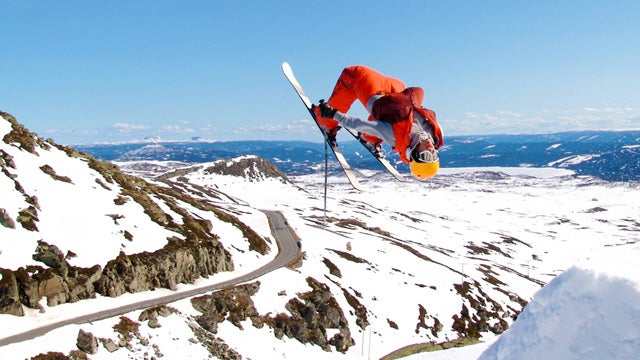Helmets are cool. At least that’s what the 67 percent of American ski-resort visitors who now wear the protective headgear say. The number, derived from a 2012-2013 study by the on helmet usage, is up 171 percent from a 2003 study, which claimed only 25 percent of skiers and snowboarders utilized the brain buckets.
So why are helmets gaining acceptance in the ski and snowboard world?
Well, for one, they are being made cooler. Companies are working to reverse the stereotype that helmets are clunky hindrances by introducing features like the built-in headphones in the Smith Gage, and the GoPro-friendly mount included on the Giro Edit. Weight and size are being decreased across the board and most offer seamless goggle compatibility. Many helmets also feature manual adjustments and vents for better fit and increased airflow.
But the two biggest factors in helmet popularity are that head injuries have taken center stage in sports after high profile athletes like Kevin Pearce and Sarah Burke sustained head injuries, and that helmet technology has increased rapidly. The claim has always been that helmets protect against serious brain trauma on the slope, but now the science and technology behind them substantiates that claim.
Helmets manufacturers are bringing in technologies like the Koroyd found in Smith Optics’ newest Variance helmet—a patented tubular protection material in between the outer and inner shells of the helmet that absorbs up to 30 percent of the energy transmitted during a fall. Last year, Scott and POC started using MIPS technology in many of theri helmets, an advancement that puts a fluid layer between the inner and outer layers of the helmet, and which pivots with the head on contact to reduce the rotational force that accounts for most serious head injuries suffered on the slopes. The technology, which mimics the fluid layer between the brain and the skull, was so successful that it will be added to Smith’s kid helmets as well this season.
Knowing when to get a new helmet can be difficult. If you are a first time buyer it’s easy: go get one today. If you’ve already got one, it’s a little bit fuzzier. According to Cassie Abel from Smith, helmets should be replaced every two to three years. Factors like temperature, the dry mountain environment, and hard use over time deteriorate the EPS foam that provides much of the headgear’s protection, a process that usually occurs over a couple years time.
It’s also worth noting that helmets are single-impact, meaning that they are meant to endure one traumatic hit, not several. In fact, when Jackson Hole skier Sally Francklyn suffered a devastating fall in the backcountry, her helmet shattered to pieces, but ultimately did exactly what it was supposed to do. This designed ‘breaking’ reduced force on Francklyn’s head and helped her survive an otherwise deadly fall. Large single impacts range in variety, but as a rule of thumb, when there is some structural damage to your helmet, it is time for a new one.


